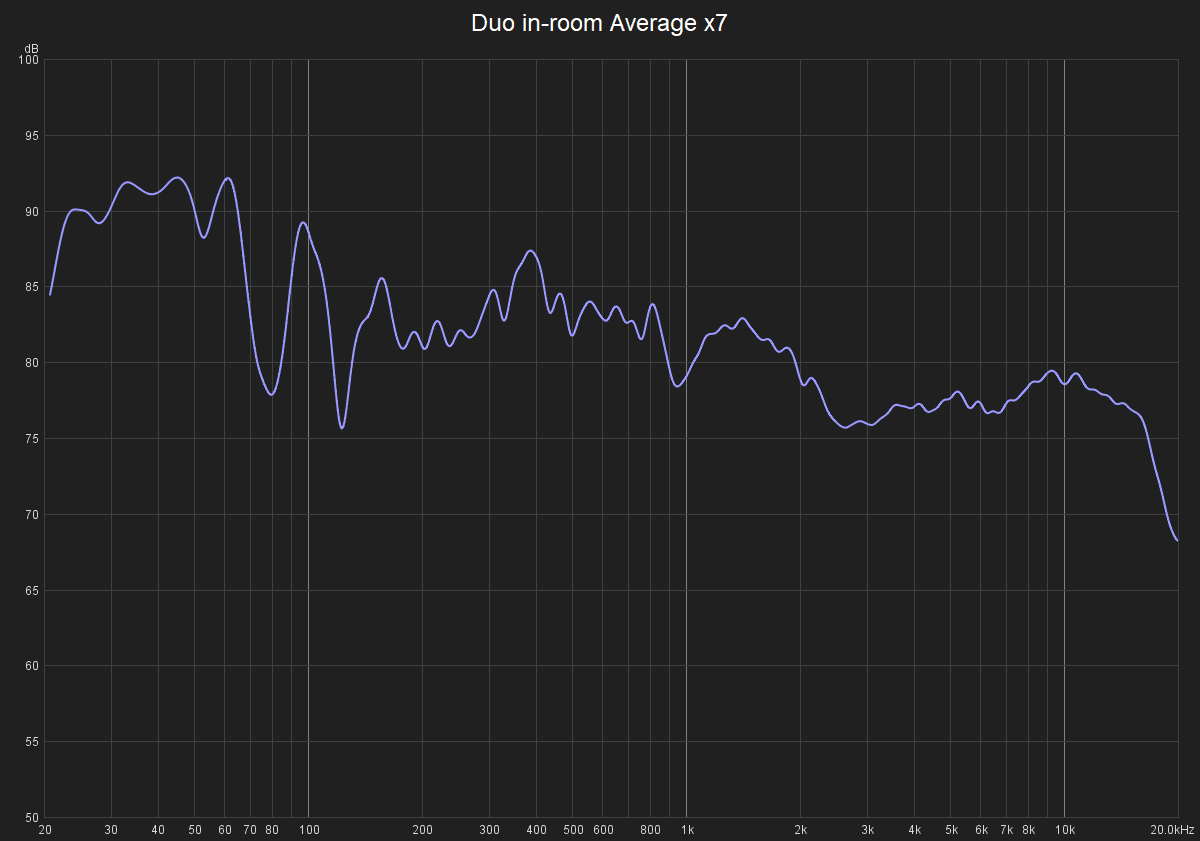Neumann KH80 because no matter how good it measures we're still going to complain about it

In all seriousness, I've been lucky to not have to measure any truly
terrible speakers, but the B&W formation duo is definitely... puzzling. The on-axis is actually decent. But the directivity characteristics... well:
And now vertical. Note these dips are
only out to 15 degrees:
I wish I'd been able to calculate a full spin. Who knows, maybe it balances out with more data. But it's not looking good.
But then, they
do have a lot of bass, and don't sound too bad on axis. Soundstage is finnicky though.




